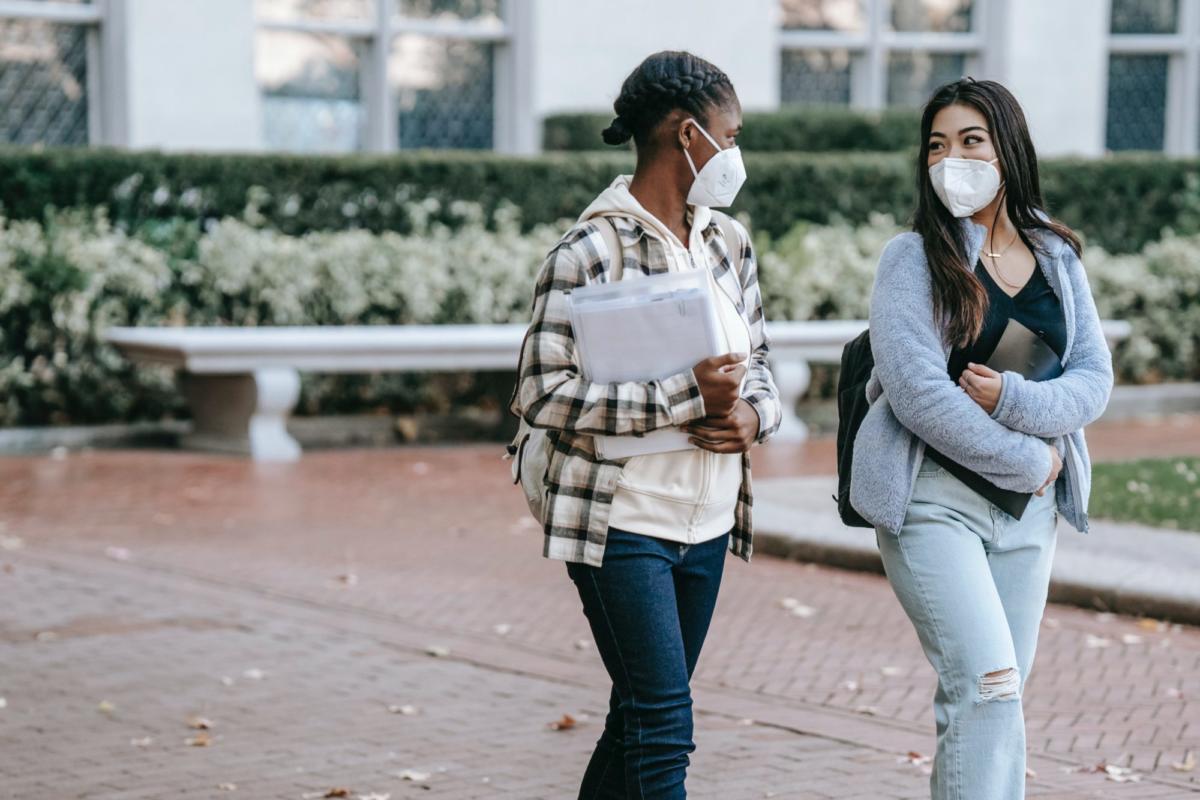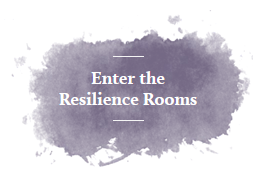How you can help your teen to thrive in trying times.
by guest blogger Juliet Glinski, Psy.D.
Mental health problems among teenagers have skyrocketed during the pandemic, suggesting adolescents are especially vulnerable to the psychological repercussions of COIVD. One large-scale study reported that teen depression rose 50%, anxiety disorders increased 67.5%, and self-harm behaviors spiked by a whopping 334%. COVID restrictions, though necessary, are directly at odds with the brain-based developmental tasks of adolescence. Understanding the teenage brain and its evolutionary underpinnings can help us appreciate the unique challenges that teens are facing in this pandemic era.
Wired for Connection (to peers) and Separation (from parents)
Scientists define adolescence as the period from 11 to 25 years of age. During this time, the brain is “under construction,” and there’s an imbalance between the limbic system, which controls emotions, and the pre-frontal cortex, which manages impulse control, planning, and decision-making. The limbic system is fully formed by puberty, whereas the pre-frontal cortex is not mature until the mid-twenties. According to Dr. Jess Shatkin, author of Born to Be Wild: Why Teens Take Risks, and How We Can Help Keep Them Safe, emotions “drive our behavior toward the things that matter for our survival, such as eating, procreating, and defending ourselves…humans are genetically engineered to prioritize emotions over logic in our adolescent and early adult years…explaining why we engage in such risky behavior at that age.”
Neurotransmitter shifts also prime teens for interpersonal relationships and exploration. Dopamine is released during pleasurable experiences and in anticipation of pleasure; serotonin is responsible for modulating mood, sleep and appetite; and oxytocin works with dopamine to link interpersonal connections to feelings of reward, making peer interactions especially compelling. From an evolutionary perspective, it makes sense that our prehistoric ancestors sought peer groups, as there was literal safety in numbers. The modern version of tribal “security” might be cliques and text groups.
It will come as no surprise that the brain’s “reward center,” the nucleus accumbens, is more responsive to dopamine during adolescence than any other time in life. This increases pleasure-seeking and causes teens to feel emotions more intensely than adults. So the “drama” teens experience actually has biological underpinnings. Unfortunately, dopamine sensitivity also makes teens more vulnerable to addiction. Consider how effective smartphones are in creating dopamine surges: the anticipation of receiving texts or “likes” on social media, the endless stream of “relatable” videos on TikTok, and the lure of internet pornography.
A shift to a later sleep phase is another biological change in adolescence. Melatonin, the hormone responsible for sleep onset, is released two hours later for teens compared to adults. Melatonin also stays in the adolescent’s brain for a longer time, which explains why some teens sleep so late. Adolescents require more shut-eye (ideally 8-10 hours) because much of their cerebral “construction” takes place during sleep.
Societies have developed structures to support adolescents through the transition to adulthood. For example, our teens spend most of their day in school, which not only provides fertile ground for curious minds but also allows safe peer group interactions. Even the thirst for dopamine can be satisfied by extracurriculars, such as playing and watching sports or performing on stage.
Ultimately, the developmental task of adolescence is to separate from one’s family enough to individuate. This push away from parents is normal, akin to earlier developmental milestones such as learning to walk. Teens still need caregivers to help them traverse the turbulent waters of adolescence. Most importantly, family can be an emotional safe-haven, especially when its members validate emotions and provide unconditional love. Parents also need to create boundaries to support health/safety. There are dozens of decisions to make about curfew, bedtime, technology, dating, alcohol, and so on—and there’s no one-size-fits-all prescription for parenting teens. The goal is to allow enough physical and psychological “space” for the teen to experience autonomy, exploration and peer connection, while also providing reasonable limits. This is a challenge even in the best of circumstances.
Enter COVID.
The Social Brain in Isolation
When schools/colleges closed and socializing stopped, the hard-wired yearnings for peer interaction did not suddenly halt in the adolescent brain. The difficulty is two-pronged: not only do teens need peer connection to develop, but COVID has also required significantly more time with the very people from whom teens are trying to separate. Furthermore, the adolescent brain is wired to seek novelty and avoid boredom, and what could be more antithetical to this than sitting in the house all day doing school on a screen?
In fall 2020, many schools offered hybrid-learning, and most students were eager to return to school. But they also described “upsides” of at-home schooling: sleeping later, staying in their pajamas, all-day phone access, and better grades (as a result of open-notebook policies, easier work, and cheating). Teens also report that school is less appealing now because socializing is limited. However, the data is clear: remote schooling has significant negative consequences, especially for students of color.
Exercise and Sleep Disruptions
At-home school seems to create inertia for many adolescents. This more sedentary lifestyle is a major concern, both physiologically and psychologically. Parents may think of it as laziness, but it’s more a result of the teen brain’s need for external scaffolding. Teenagers are predisposed to seek short-term dopamine spikes (binge-watching Netflix) and don’t always have the pre-frontal cortex strength to postpone gratification (go for a run and then watch Netflix).
Exercise increases serotonin and plays a crucial role in motivation, focus, and mental health. Aerobic exercise is as effective as anti-depressant medication in reducing depressive symptoms, and experts agree that decreased physical activity is a major factor in the rising mental health problems this year. As both a parent and psychologist, I am greatly relieved that many districts have re-started sports.
COVID has also impacted sleep cycles for many adolescents, whose sleep patterns have shifted even later. Online-schooling is less demanding, so many students think a good night’s sleep is less important. The pull to socialize with friends or peruse social media into the late hours is tempting. Furthermore, many students do schoolwork in their rooms, often in bed, so there is no demarcation between sleep and work space. Heightened anxiety and the increased time in front of blue light from screens can also delay sleep.
How Parents Can Help
We have vaccines for the virus, but there isn’t a psychological inoculation. It’s unclear what long-term effects this pandemic will have on the minds and lives of adolescents. COVID created a social experiment that will likely be studied for years to come. In the meantime, we can use the science of the teen brain to better understand how we can best support them:
1. OPT FOR IN-PERSON SCHOOL, unless the teen (or family member) is high-risk and unvaccinated. Schools have done an excellent job of preventing COVID spread, and some are even reopening at full capacity.
2. RETURN TO SPORTS/EXTRACURRICULARS. The data suggests very low transmission rates for these activities.
3. ENCOURAGE MOVEMENT. It takes creativity to figure out how to encourage exercise without pushing too hard. Remember that structure (e.g. organized sports, classes), peers, and fun will help to motivate them. Also, have your teen walk/bike to school, if possible.
4. TECHNOLOGY LIMITS AND HEALTHY SLEEP HABITS ARE EVEN MORE IMPORTANT NOW given that their routine and structure have been disrupted. Rules for screens and sleep will vary from family to family, but there are a few hard-and-fast guidelines, even in non-COVID times.
- Plug the phone in outside of their bedroom at night
- No TV/video games in the bedroom
- Keep a consistent bed time
- If your teen must continue at-home schooling (or if they get quarantined), their phone should be in different room from their work space with notifications turned off
5. CREATE OPPORTUNITIES FOR FUN AND THE UNEXPECTED. “Spike” the weekly routine with dopamine-surging opportunities. What each teen finds intriguing varies, but here are real-life examples:
- Take a “food tour”: compare pizza slices, try food trucks with varying cuisines, battle of the burgers
- Create an outdoor “hang-out” space for your teen and their friends
- Let them color their hair
- Film TikTok videos with/for them
- For a daredevil who likes skateboarding, skiing/snowboarding, or bike tricks, research places to do these outdoor activities, take a deep breath, and let them go
- Give them a wall in the garage or basement to paint a mural
6. LET YOUR TEEN EXPRESS THEIR AUTONOMY. Allow your adolescents to make their own decisions about matters that reflect their individuality, such as physical appearance, class choices, room layout, etc.
7. VALIDATE FEELINGS RATHER THAN TRYING TO FIX THE PROBLEM. Remember their brain is set up to feel things more intensely than adults. The key to validation is communicating that you see their emotional experience. Validation can be verbal, such as “It makes sense that you are upset” or “I get it,” or behavioral, such as giving them a hug or offering to help them with a task.
Guest Blogger:
Juliet Glinski, Psy.D. is a licensed psychologist with over 20 years of experience providing psychological services to adolescents and adults. She has a private practice in White Plains, NY and specializes in anxiety, depression, suicidality, adolescent development, parenting, health/wellness, and life transitions.
Dr. Glinski attended the University of Pennsylvania for her B.A. and earned her doctorate at Yeshiva University of the Albert Einstein College of Medicine. Dr. Glinski has published, taught, and presented on a variety of topics including child/adolescent depression, treatment for suicidal youth, Dialectical Behavior Therapy (DBT) for adolescents, assessment/intervention with weight loss surgery patients, family therapy, and parenting programs.



